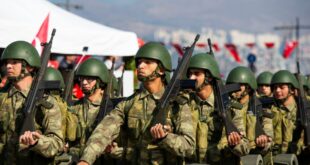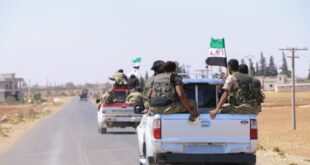Antonio Graceffo
Tensions between Washington and Moscow have increased dramatically since the invasion of Ukraine, making a conflict between the United States and Russia more likely now than it has been in decades. Meanwhile, Ukraine’s ability to hold out against the Russian invasion for so many months raises questions about Russia’s ability to fight a war against the United States. Winning a war is predicated on a number of factors beyond the absolute size or even the firepower of a nation’s military. For this reason, security analysts utilize a PEMSII assessment to measure a country’s martial capabilities across a number of dimensions: political, economic, military, social, infrastructure, and information. A PEMSII analysis of Russia reveals significant weaknesses which may explain Russia’s inability to defeat Ukraine in short order. Naturally, the analysis results also have implications for a possible war with the U.S. or with NATO.
Political Assessment
The political dimension of PMESII measures how effectively the central government governs its own territory. This includes how much political freedom citizens enjoy, and which subcultures are most vulnerable.
In the 2022 Freedom House assessment, Russia scored 5 out of 40 in political rights, and 14 out of 60 in civil liberties, for a composite score of 19 out of 100. The authoritarian political system vests most of the power in Vladimir Putin, to whom the security forces are loyal. The judiciary is subservient, and the media controlled. In Freedom House’s opinion, the opposition is pliable, allowing the Kremlin to manipulate elections and suppress dissent. These findings are consistent with those of the Heritage Foundation, which found Russia to be riddled with corruption, assigning the nation a Judicial Effectiveness score of 34.7, and a Government Integrity score of 29.7. Allegations of corruption are supported by Transparency International, which in 2021 awarded Russia a score of 29 out of 100 (100 being entirely free of corruption), ranking it 136th out of the 180 countries and territories surveyed.
Military Assessment
Russia has between 1 million and 2.2 million troops, while the United States has 1.4 million. The U.S. is first in global firepower and Russia is second. In terms of a land-based war, the U.S. has more intercontinental ballistic missile (ICBM) launchers, while Russia has more infantry fighting vehicles and tanks. Russia has more bombers, while the U.S. has more attack helicopters and artillery.
The U.S. leads in almost every indicator of naval firepower, such as ballistic-missile nuclear-powered submarines and attack/guided missile submarines, aircraft carriers, cruisers, destroyers, and frigates. Russia is leading in amphibious ships with 49 to the 31possessed by the U.S.
In terms of alliances, the U.S. leads by a tremendous margin. As a member of NATO, the U.S. is supported by a combined troop strength of over six million, including active duty, paramilitary, and reserves.
Russia is a member of the Collective Security Treaty Organization (CSTO), which includes: Russia, Armenia, Belarus, Kazakhstan, Kyrgyzstan, and Tajikistan. Moscow also has formal defense agreements with Abkhazia and South Ossetia. Russia has a sometimes-relationship with China, although two do not have a defense agreement. Russia sells weapons and energy to India, which did not condemn Russia’s invasion of Ukraine. But India tends to be in the U.S. camp when confronting China. Vietnam also buys its weapons from Russia and had an historical friendship with the Soviet Union, but Vietnam is largely in the U.S. sphere of influence, particularly when it comes to China. Additionally, Turkey, Pakistan, Myanmar, Venezuela, Cuba, Nicaragua, and Syria are nations which Russia has supported politically or with weapons or economic aid.
Russia is also a member of BRICS (Brazil, Russia India, China, South Africa) — mainly a trade and economic group, rather than a military alliance — and the Shanghai Cooperation Organization (SCO). The SCO brings together China, India, Kazakhstan, Kyrgyzstan, Russia, Tajikistan, Pakistan and Uzbekistan. Like BRICS, SCO focuses mostly on trade and economic cooperation, but its charter does contain a security component. There is, however, no mention of defense in the agreement.
Economic Assessment
Economic analysis evaluates the relative strength of the economy, as well as its productive capacity. This extends to banking, electronic payment systems, and the general economic strength of a country and its currency. Russia is an upper-middle income country with a nominal GDP of $1.48 trillion, making it the 11th largest economy in the world. Its per capita GDP is $10,126. By contrast, the United States has a nominal GDP of $20.89 trillion and a per capita GDP of $63,413. Sanctions imposed on Russia, as a result of the Ukraine invasion, are expected to cut the former country’s GDP by between 5.5 percent and 9 percent. Exports are down by over 17 percent, while oil exports are down 3 percent. Inflation is up 22 percent. Since the invasion, the MOEX Russia Stock Index has lost about one-third of its value. An estimated 250,000 to 300,000 Russians have fled the country, emptying their bank accounts of some $14 billion worth of rubles.
Washington has blocked Russia’s access to cash reserves held in the U.S. Major Russian banks have also been removed from the U.S.-controlled SWIFT transfer system. The U.S. has banned all Russian oil imports; the EU bans some and plans to expand the ban in February. The U.S. expects more countries to boycott Russian banks and to block the Russian MIR payment system. Turkey, in spite of being an occasional ally of Russia, has also complied.
The Russian ruble lost roughly 30 percent of its value immediately after the invasion, but has recovered to a higher level than before the invasion. However, Russia has almost no way to do international trade settlement, except with countries will to use rubles or yuan, as many banks around the world are refusing to process ruble payments.
Social Assessment
The social variable examines cultural makeup of a country, with respect to the religious, linguistic, and ethnic composition.
Russian law recognizes Christianity, Islam, Judaism, and Buddhism as the four “traditional” religions. Orthodox Christians comprise 63 percent of the population, Muslims 7 percent, those with no faith 26 percent, while Buddhists, Jews, other Christians, and animists were each 1% or less. The Russian Federation contains roughly 200 ethnicities, with Russians comprising 77.7 percent of the population. Among the ethnic minorities are Tatars (3.8 percent of the country’s total population), Ukrainians (1.4 percent), Bashkirs (1.1 percent), Chuvash (1 percent), and Chechens (1 percent). The remainder are various smaller groups, including Mongolic and Turkic peoples.
As a result of the unequal distribution of wealth across the country, most Russians in rural areas, and in areas mainly inhabited by ethnic minorities, are poor. In 2021, Ingushetia had 30.9 percent unemployment. Joblessness in Dagestan was 15.1 percent, in Tuva 15 percent, in Chechnya 14.5 percent, in North Ossetia–Alania 13.4 percent, in Karachay-Cherkess 12.3 percent, and in Altai 12 percent. And these are the areas from which conscript soldiers, comprising 25% of Russia’s troops, are drawn. Since the announcement of military conscription for the war in Ukraine, tens of thousands of young men have fled the country, rather than fight.
Infrastructure Assessment
Infrastructure analysis looks at the fixed and mobile assets which would help a country wage war. This includes the number, quality, and capacity of roads, highways, seaports, airports, and railways. On the Gain Index, a ranking of countries by infrastructure development, Russia scored .158, considerably below the United States’ .275. In terms of quality of infrastructure, Russia achieved a score of 73.8 and a rank of 50th in the world, while the U.S. had a score of 87.9, ranking 13th in the world.
Transportation networks are unevenly distributed, neglecting the Russian Far East (RFE), Asia, and the Arctic. The country’s port systems are overloaded. Also, there are too few well-engineered bridges capable of supporting expanded cargo loads.
Gas pipelines are one of the most important components of Russia’s infrastructure, contributing to GDP and increasing Moscow’s influence in Europe. Cutting the pipelines would sink the economy. But this can only be done if Europe finds a workaround, to replace the energy they currently source from Russia.
Information Assessment
The information component of analysis looks at those entities, both formal or informal, which collect process, or disseminate information, as well as who controls the actors and the content.
Russia’s constitution protects freedom of speech, but public security laws have been exploited to control the media. All national TV and many networks are controlled, directly or indirectly, by the government, through state-owned enterprises or private companies that are sympathetic to the government. The same is true of most other forms of media, media markets, and media advertising markets. Only a small number of independent media exist, operating online or from outside of the country.
During the 2018 elections, media friendly to Putin were given preference. On the Press Freedom Index Russia scored of 38.82 out of 100 points, placing Russia 155th in the global ranking of 180 countries. Internet freedom was 30 out of 100. Recently, the Kremlin broadened its definition of the words “undesirable,” “extremist,” and “foreign agent,” in order to arrest or deport journalists. This includes private citizens posting on social media.
 Geostrategic Media Political Commentary, Analysis, Security, Defense
Geostrategic Media Political Commentary, Analysis, Security, Defense





